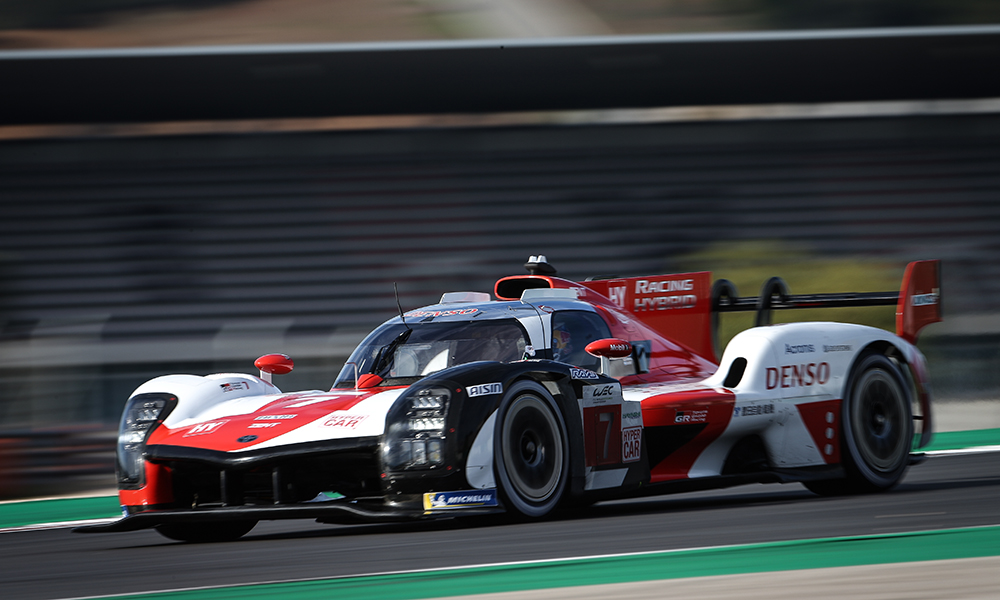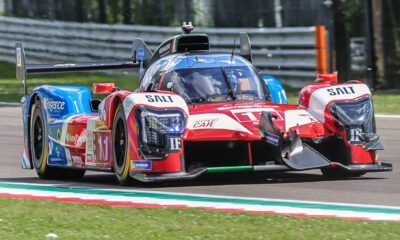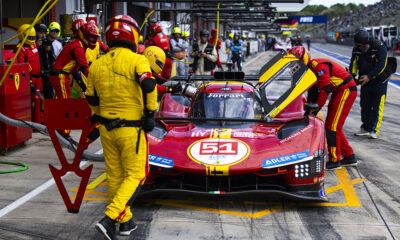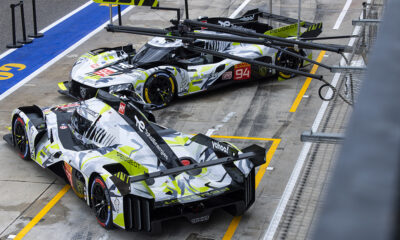
Photo: Toyota
Toyota expects FIA World Endurance Championship races in the Hypercar era to play out differently from before, based on the attributes of its new car’s hybrid powertrain and the influence of the regulations.
The Toyota Gazoo Racing factory team will run a pair of Toyota GR010 Hybrids this year off the back of eight seasons operating cars built to the outgoing LMP1 regulations.
Toyota technical director Pascal Vasselon said that one of the “main differences” between Toyota’s LMP1 and LMH cars could be found in their powertrains, leading to different outcomes in races.
The now-retired Toyota TS050 Hybrid LMP1 carried two electric motor generator units on the front and rear, while the GR010 Hybrid contains a single MGU on the front axle.
Although the GR010 has a larger internal combustion engine, the car’s total power output is lower than that of its LMP1 predecessor and capped at 500 kW (670 hp).
Furthermore, the LMH rules state that cars on slick tires must wait until hitting 120 km/h before their electric motor is deployed, which is set to produce a different acceleration pattern out of corners with the Toyota drivers no longer benefiting from boost.
“Now we have a set maximum power which we have to respect at any time,” said Vasselon. “All of the cars will have to respect the same power curve.
“So [there is] definitely no more push-to-pass, and no more big difference in terms of acceleration profile of the different cars.
“This was one of the boxes to be ticked from the Balance of Performance. For the BoP to work well, you need to have all the cars within the same performance profile.
“This change of powertrain management was a must-have in the context of the BoP.”
Brendon Hartley, who is entering his second season with Toyota after replacing Fernando Alonso in the No. 8 lineup for 2019-20, predicts that the GR010 Hybrid’s qualities will require adaptation both from its own drivers and from those in the WEC’s other classes.
“The dynamic of how we approach the traffic is going to be really different,” said Hartley.
“For the LMP2 and GTE cars, I think they’re also going to have to adapt when they see us in the mirrors. Top speed won’t be too different, but the way we accelerate is going to be.
“[In LMP1] we had 1000 hp and we accelerated like a rocket, and more or less flat-lined and even started decelerating before we braked.
“Now it’s a much more conventional power curve, where we’re accelerating for the whole straight line. You won’t see us rocket past out of the corners. I think we’re going to be diving under on the brakes more often.
“But we have a heavier car with less downforce, so I’m not sure we’re going to brake later than an LMP2 car. There’s still a lot for us to learn, in how we manage that risk.”
Hartley added that the hybrid power deployment rule will provide a challenge for drivers exiting slow corners in wet conditions, but the New Zealander is confident that the Toyota will be stable in that scenario.
“We’ve already done a bit of testing in the wet at Portimao,” he said.
“The four-wheel-drive and initial acceleration is the biggest topic. We can’t use our front-drive below a certain speed, so that makes things trickier in the wet.
“Other than that, it’s no more different in the wet than it is in the dry. It’s not a big drama for us to adapt.”
Toyota’s hybrid system will enable its drivers to avoid lifting at the end of straights which, according to Hartley, will lead to changes in how braking zones are approached.
“Without the fuel-saving, we’re attacking the brake pedal from v-max, which is almost going back to the pre-hybrid LMP1 era,” he said.
“It’s taking some of those skills from that, or even when I was in Formula 1. It’s a closer driving style to that, for example.”
Hartley’s co-driver Sebastien Buemi added: “The fact that we don’t have to save fuel per lap like we used to do with the TS050, makes it quite nice to be able to stay flat until the end of the straight.
“You’re driving a car that has slightly less downforce and power. You don’t necessarily feel like you’re going much slower.”
Single Aero Package More Suited to Le Mans
Triple 24 Hours of Le Mans winner Buemi reckons that the GR010 Hybrid’s single aerodynamic configuration is more akin to the TS050 Hybrid’s low-downforce setting than its high-downforce counterpart.
The LMH rules permit each manufacturer to produce only one aero kit, rather than two that can be interchanged depending on the characteristics of the next track on the calendar.
“I think it’s definitely closer to the low-downforce specification,” said Buemi.
“We expect the performances in Le Mans to be, in relation, slightly [closer] to the TS050 than it will be for the [rest of the] WEC.
“We have only one aero package, and it is much more suited to Le Mans than to other tracks.”
Toyota’s deficit to its previous LMP1 lap time numbers is still set to be greater at Le Mans than at other WEC venues, largely due to the longer lap at the Circuit de la Sarthe.
Vasselon suggested that the general time loss at all circuits can’t be attributed to a single aspect of the LMH design.
“I think it’s now more or less confirmed that the magnitude of the loss will be 10 seconds at Le Mans and four to five seconds on a WEC track,” he said.
“The time loss is everywhere. One of the principles of the new regulations was to accept a reduction of performance.
“Here, we lose time as a consequence in cornering speed, for two reasons: the car is heavier, and the aero efficiency is set at a lower level to what we were able to achieve in LMP1.
“Then we are losing in acceleration for two reasons: mass again, and the fact that the combined hybrid system [output] is now lower.”



























